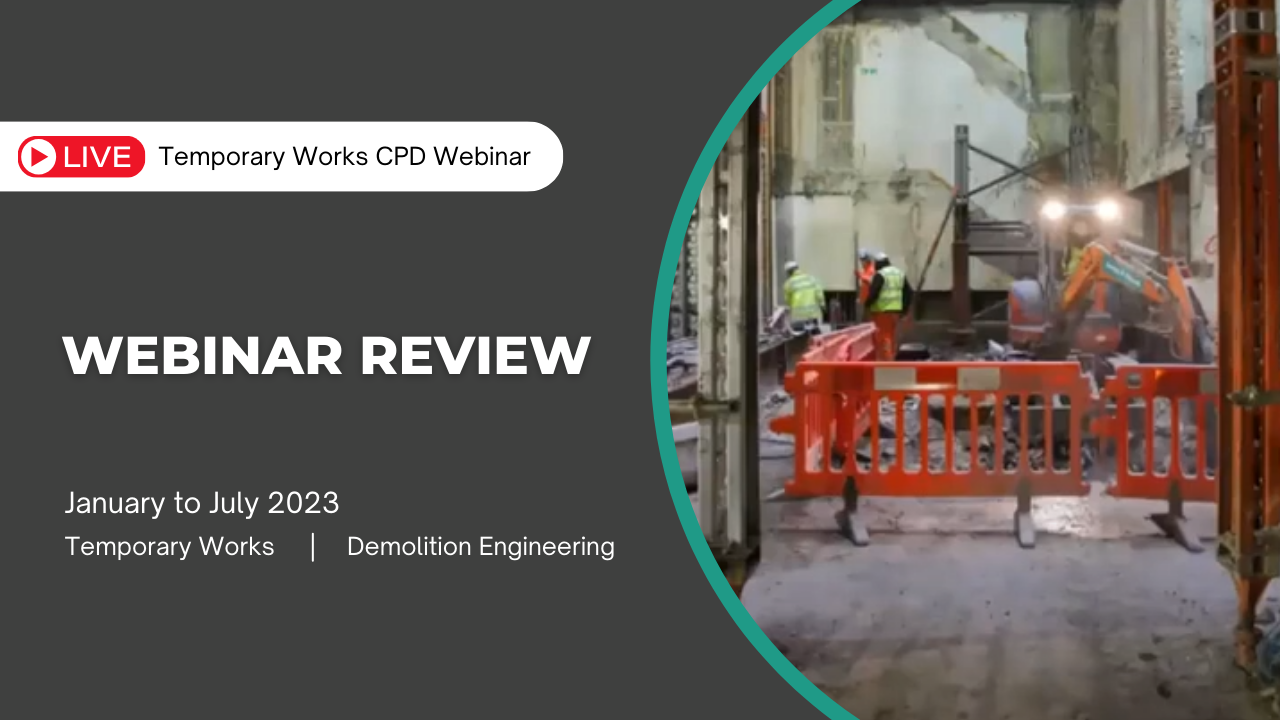As our temporary works webinar series takes a summer break, here is a review of the CPD webinars we have had in 2023.
Featuring several different speakers from Andun and a guest speaker from Network Rail, the webinars have spanned a range of diverse temporary works and demolition engineering themes.
Ranging from cut-and-carve demolition, site investigation to medieval engineering.
January: Cut and Carve Demolition
The start of the year saw a review of the engineering disciplines in the design of effective cut and carve demolition schemes.
The webinar broke down the core aspects of cut-and-carve demolition engineering, focusing on methodologies and the vital role of temporary works.
Drawing on real project examples, to highlight practical challenges and solutions related to structural considerations and load history.
Case Study – Bristol Beacon
February: Effective Temporary Works Design Briefs
February highlighted what should be included in a temporary works design brief and addressed common pitfalls, offering guidance on creating a concise, efficient, and effective brief.
- Essentials for TW Design: What should and shouldn’t be included.
- Efficiency: Avoiding common pitfalls.
- Guidance: Creating precise and effective design briefs.
March: Temporary Works Case Studies
March focused on several different temporary works and demolition engineering case studies.
- Willesden Junction Substation: Rail environment demolition.
- Euston PSB: Protection screen design.
- Eleanor Street Shaft – Crossrail: Steel formwork design insights.
- Three Colts Lane: Rail Bridge demolition strategies and solutions.
April: Site Investigation & Mitigation
April looked at the importance of site investigation for ensuring construction safety and efficiency.
Discussing testing methods, economic considerations, and the long-term benefits of thorough site investigations.
- Testing Methods: Importance and application.
- Benefits: Of thorough site investigations.
- Safety Considerations: Ensuring construction safety and efficiency.
May: Best Practices in Rail Temporary Works
Steve Williams from Network Rail shared his expertise in May, presenting best practices and lessons learned from rail temporary works.
The webinar stressed the significance of design briefs, planning, and industry-standard compliance.
- Design Briefs: Their significance and implementation.
- Planning: The role of meticulous planning in projects.
- Industry Standards: Ensuring compliance and understanding guidelines.
June: Medieval Engineering
A historical engineering perspective with Joshua Martin comparing medieval and modern engineering practices.
Reviewing the sustainability and adaptability of age-old engineering methods through the trebuchet reconstruction at Warwick Castle.
- Medieval vs Modern: A comparison of engineering practices.
- Trebuchet Reconstruction: Insights from the Warwick Castle project.
- Sustainability: Appreciating the environmental value of age-old engineering methods.
July: Load Testing
Highlighting the role of rigorous analysis in determining design parameters and the nuances of safety during such tests.
Case Studies:
- Rigorous Analysis: Its role in determining design parameters.
- Safety Nuances: Understanding the critical aspects of safety during tests.


